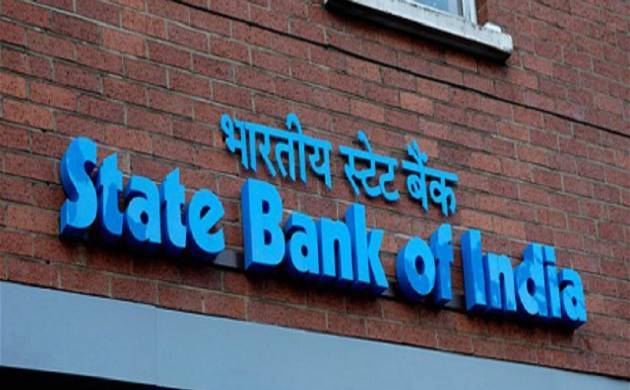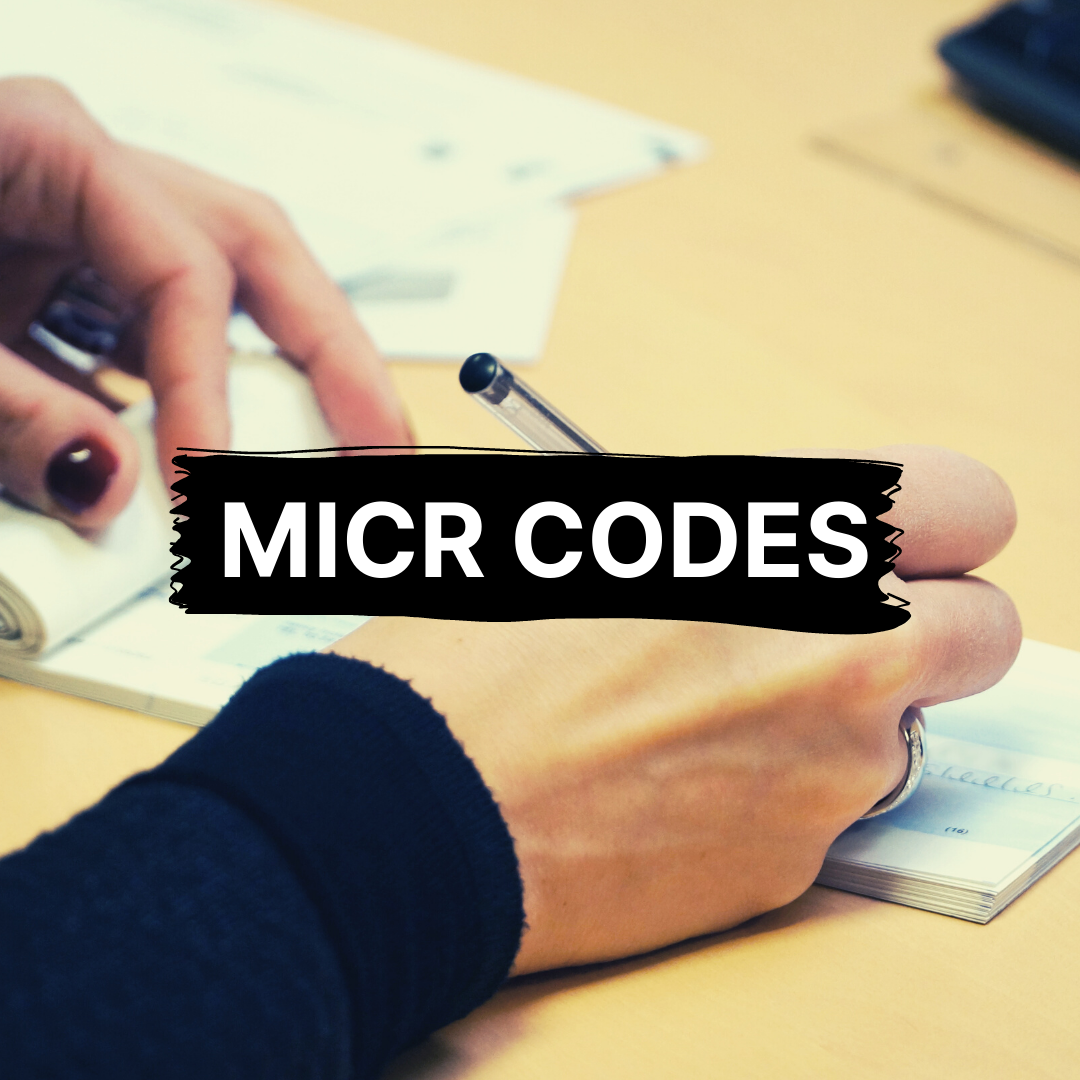Have you ever noticed those printed magnetic ink code bars at the bottom segment of all cheques? — It is known as MICR Code.
Magnetic ink character recognition (MICR) is a unique 9-digit code that checks identification and processing methods. It is further positioned at the bottom white line of all cheques and is known as the MICR Band.

Established by RBI, this MICR-based cheque clearance technology started in the early 1980s as part of safe and secure payment options and initiatives. Moreover, MICR makes easier cheque processing for banks used for domestic and international transactions. Also, it enhances transaction security.
In this article, we’ll cover all aspects of MICR or Magnetic Ink Character Recognition. It includes:
- About MICR Code
- Use of MICR Code
- Format of the MICR Code
- 3 Ways to find MICR Code
- Advantages of MICR Codes
- Drawbacks of MICR Codes
- Difference between MICR Code and IFSC Code
- MICR Code FAQs
- Final Takeaways
About MICR Code
MICR is a code that is printed on MICR checks (Magnetic Ink Character Recognition technology). Furthermore, this allows the cheques to be identified, which leads to speedier processing.
Moreover, a MICR code is a nine-digit code that uniquely identifies a bank and branch that associates in an Electronic Clearing System (ECS).
In addition, magnetic ink or toner containing iron oxide is used to print MICR codes. These printed codes are easily read by a machine.
Note that: Every bank branch has been assigned a unique MICR code. Also, it allows RBI to track payments and the source bank branch.
It encompasses 3 parts:
1. The first three digits signify the city code. It is further joined with the PIN code, which is used for postal addresses in India.
2. The next three digits depict the bank code.
3. Lastly, the final three-digit represents the branch code.
Remember that the MICR code is found next to the cheque number on the bottom of a cheque leaf. It's also printed on the first page of a savings account passbook at a bank.
Use of MICR Code
Manual cheque delays and human errors could possibly lead to certain faults. Therefore, RBI took the matter into its hand to address this concern and developed this 9-unique digit code.
The interesting fact about this 9-digit code is that— it is machine-readable and diminishing all possibilities of any errors or faults.
Further, this method has boosted the efficiency and accuracy of the financial system. In addition, you can also use MICR code to fill in certain transactions forms such as SIP, and so on.
Moreover, the introduction of the MICR code by RBI has also contributed to reducing the paper wastage clearing process. Also, the cheque processing time has also been reduced considerably through the MICR code.
Remember that MICR code is different from IFSC code. Moreover, the former is used for cheque clearance while the latter is used for the bank-to-bank electronic fund transfers.
Eventually, both MICR and IFSC code play a major role when it comes to authentication of the source of a transaction.
Format of the MICR Code
The MICR code is formatted in a unique manner. Moreover, it consists of a 9-digit code, which is used to identify the bank branch taking part in the electronic clearance system or ECS.
Let’s break down the MICR code to understand better. The MICR code consists of 9-digit and the first three-digit indicate the city code. Further, the next three-digit signifies the bank code. Lastly, the final three-digit represent the branch code.
Check this example: The MICR code of one of the Chennai SBI branches may represent 600002025. This MICR code, 600 depicts the city of Chennai, 002 depicts the bank code of SBI, and lastly, 025 signifies the branch code.
In addition, these codes could be easily read by the MICR machine readers. Interestingly, MICR reader machines recognize the unique waveform, which is generated by the magnetic ink characters despite multiple stamped or overprinted.
3 Ways to find MICR Code
Following is the list of ways by which you can easily find your bank branch’s MICR code. Let’s learn:
Checkbook
You will find crucial information on your checkbook or passbook. Further, you can easily obtain the MICR code on the footer area of your checkbook or passbook. Note that the MICR code is presented next to the 6-digit number called the cheque number.
In addition, the first page of your bank account book also has a MICR code.
RBI Website
Another way to check your MICR code is via the official RBI website. Moreover, you can easily find the MICR code of all the Indian bank branches.
Third-Party Website
Lastly, you also have the option to check your MICR code through third-party websites such as MyBankDetails.com. Furthermore, you will be asked certain information before starting the process. The information includes bank name, state, district, and branch name.
Moreover, you need to fill in all the information picked from the drop-down menu. Once you provide and fill in all the details, then it will display the MICR code of your bank branch.
Advantages of MICR Code
Following is the list of advantages or benefits of the MICR Code. Let’s learn:
- Despite severe handling, MICR information may be read with a high degree of accuracy.
- The document is difficult to forge.
- MICR information is processed quickly.
- Because there is no manual input, errors are reduced.
- Even if someone writes on the characters, they can be read. This is owing to the fact that the characters are printed using unique ink containing iron particles.
- It provides more security than OCR technology since printed characters cannot be changed.
Drawbacks of MICR Code
Following is the list of disadvantages or drawbacks of the MICR Code. Let’s learn:
- It can only recognize ten numbers and four special characters.
- MICR does not employ alphanumeric characters. Only a limited number of characters can be read.
- It is a more expensive data entering the approach.
Difference between MICR Code and IFSC Code
Check the following table to learn about the differences between MICR code and IFSC. Let’s explore:
MICR Code FAQs
Here is the list of some of the most frequently asked questions about the magnetic ink character recognition (MICR) line is discussed below.
- What Is MICR and How Is It Used in Banks?
Since the late 1950s, the MICR system has been used to automate check processing while making it more difficult to perpetrate check fraud. The system was adopted by banks all across the world.
This is why bank checks have such a consistent format. It must be in order for the MICR numbers to be read by the readers.
- What is the significance of the MICR code?
MICR is a technique that aids in the authentication of the authenticity of checks and other paper documents. It is primarily used by banks to expedite the processing of checks. The MICR code aids the RBI in locating a bank branch.
- What is MICR Number and its meaning?
A magnetic ink character recognition line (MICR) is a line of characters printed on a check using special ink that allows a reader-sorter system to recognize the characters.
Moreover, the MICR reader process allowed check processing to be automated while also making counterfeiting checks a bit arduous. And difficult.
Final Takeaways
We have summarised the important points of this comprehensive guide. Let’s cover:
- Magnetic ink character recognition (MICR) is a unique 9-digit code that checks identification and processing method.
- This 9-digit code is that— it is machine-readable and diminishing all possibilities of any errors or faults.
- MICR code is presented next to the 6-digit number called the cheque number.
- The MICR encompasses 3 parts:
— The first three digits signify the city code. It is further joined with the PIN code, which is used for postal addresses in India.
— The next three digits depict the bank code.
— Lastly, the final three-digit represents the branch code.
- MICR makes easier cheque processing for banks used for domestic and international transactions.
- Ways by which you can easily find your bank branch’s MICR code include— cheque, RBI website, and the third-party website.
- MICR code is different from IFSC code.








